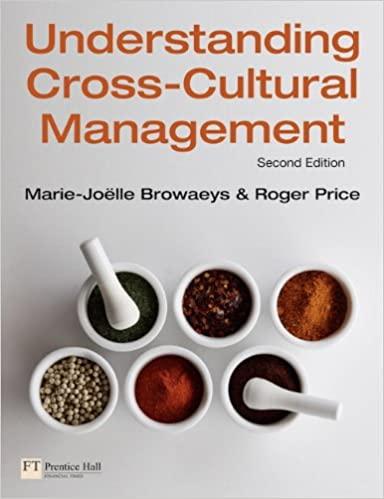Fraud seems to be a universal phenomenon. In this case, however, the author underlines the difference between
Question:
Fraud seems to be a universal phenomenon. In this case, however, the author underlines the difference between committing fraud in the US and Europe. Can you explain how this difference comes about?
Why financial scandals differ in the US and Europe By Michael Skapinker ‘Does Europe hate us?’ Thomas Friedman, the New York Times columnist, asked in a documentary on the Discovery Channel last week. The answer, he concluded after pottering around the Continent looking increasingly worried, was ‘yes’.
From the war on terror to attitudes to maternity leave, Mr. Friedman’s film made it plain that Europeans inhabited a different world from Americans. When it came to business, he portrayed a Europe whose bureaucrats plotted endlessly to make life difficult for US companies. Brussels was banning pharmaceutical ingredients regarded as perfectly safe in the US. European competition authorities had stamped on the ambitions of US companies from Microsoft to Coca-Cola.
His narrative punctuated by the sort of menacing soundtrack film-makers reserve for those moments before dad opens the door to discover that his family has been murdered by machete-wielding maniacs, Mr. Friedman asked: ‘Is this the end of the west?’
Quite possibly – and it gets worse. According to a recent paper by John Coffee of Columbia law school, the US and Europe are so far apart that they even suffer from fundamentally different corporate scandals.*
Take two emblematic examples: Enron in the US and Parmalat in Europe. The Enron misdeeds were aimed at boosting and maintaining the energy trader’s share price. At Parmalat, the dairy group, by contrast, money appears to have been siphoned off for the benefit of particular individuals.
The divergence reflects underlying differences in the way US and European companies are organized, Prof Coffee argues. In the US, the typical company’s shareholders are a widely dispersed group. Being too fragmented to exercise day-to-day control over executives, they attempted to align top managers’ interests with theirs by granting them share options.
In 1990, the average chief executive of an S&P 500 Industrial company earned $1.25m (£660,000), of which 92 per cent was in cash and 8 per cent in equity. By 2001, the average chief executive was earning more than $6m, of which 66 per cent was in equity.
Step by Step Answer:

Understanding Cross Cultural Management
ISBN: 9780273732952
2nd Edition
Authors: Marie Joelle Browaeys, Roger Price





